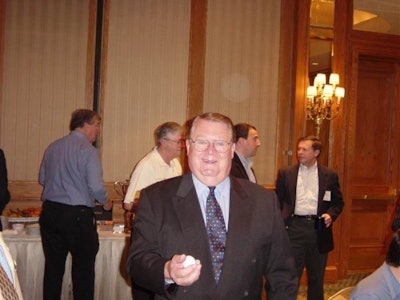
For many egg producers, the No. 1 question as they face 2007 and beyond is none other than this: when will profitability finally return to the industry. In the view of Al Pope, retiring president and CEO of the United Egg Producers as of Feb. 1, the answer is, “on a sustained basis, probably another two-to-three years.” The reason why, he says, has to do with the most dramatic event affecting the industry on the production side, in-line production.
Prior to in-line breaking, excess production from the shell egg side of the business went into breaking plants, but no more with in-line breaking, and that’s meant surplus eggs “have to find a home.” He thinks the industry is possibly three-fourths of the way in working through this adjustment.
Another key event over the past two-and-a-half decades, Pope says, is the development of the Egg Nutrition Center with egg checkoff dollars, which has helped turn around the cholesterol issue, resulting in an increase in per capita consumption of eggs.
Animal welfare
But Pope sees a huge challenge in the future on the animal welfare front, which he believes will play a role in consumption over the next 25 years. He credits the industry by being proactive, with 90% of producers adopting UEP’s science-based animal care standards to counter groups such as the Humane Society of the United States, and others, whose goals are to put an end to animal agriculture.
Pope says, however, that adopting the science-based standards is not enough: producers also have to communicate that the standards are being followed to consumers, and that’s not easy. One way he sees for producers to do that is through improved efforts at branding eggs, which not only communicates animal care standards, but other value-added egg and egg products. That’s being done somewhat with omega-3, organic, cage-free, and other egg attributes, but Pope sees more opportunities. By creating more value-added, branded egg products, he sees egg producers obtaining a larger share of consumer dollars spent on eggs. “Retailers are making a ton of money out of eggs,” he states. Egg producers have done a superb job on the production side of the business at becoming increasingly efficient, not such a good job on the marketing end, he says.
Also on the horizon, is increased consolidation similar to what’s occurred in the broiler business, he says, but that doesn’t mean all egg operations will have to be the size of Cal-Maine Foods to be competitive. One way Pope sees for smaller operations to be competitive is to form cooperative ventures—particularly on marketing—with other modest-sized operations.
Environmental rules
Another huge issue the industry will be facing in the years ahead—and already is—is continued pressure on environmental rules, Pope says. While permits will become increasingly difficult to obtain, he also sees opportunities to turn poultry manure into fertilizer, and for producers to use methane digesters to turn chicken waste into electricity.
Pope also believes that restrictive environmental rules will affect where future poultry operations are located. For example, he sees the industry moving away from states with high population densities, such as California and possibly Ohio, to states more on the fringes of the western Corn Belt, such as Kansas and Nebraska. And even in Iowa, which welcomed layer operations a decade ago, “it’s becoming more difficult to obtain a permit. They’re not as encouraging as they used to be.”
Another issue that will affect egg producers in the years ahead, Pope says, is tighter restrictions on documentation for Hispanic workers, “and we have a huge Hispanic-based pool of employees.” And lastly, Pope says that the industry should prepare itself for additional food safety challenges in the decades ahead as consumers demand to be able to link products back to the farm where they’re raised.


















